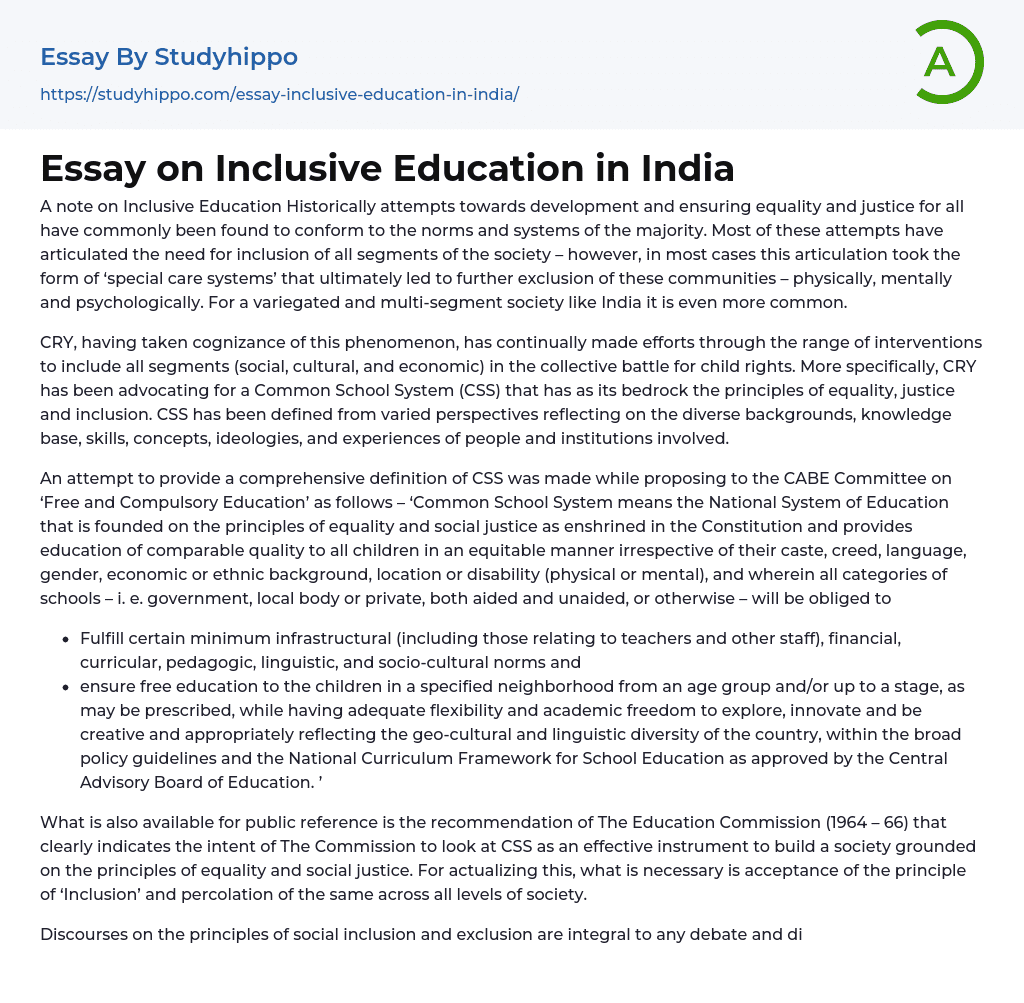Traditionally, measures taken to foster advancement and secure equality have generally conformed to the majority's conventional methods. A significant part of these efforts emphasized the importance of incorporating every segment of society into the prevailing culture. Regrettably, these strategies often resulted in 'special care systems' that unintentionally intensified the segregation of these communities, not only physically but also mentally and emotionally. This problem is especially noticeable in a heterogeneous multi-faceted society like India.
Understanding the gravity of this phenomenon, Child Rights and You (CRY) has tirelessly strived to involve all societal, cultural, and economical sectors in the shared fight for children's rights. In particular, CRY has been championing for a Universal Schooling System (USS) anchored on the pillars of equality, justice, and inclusivity. The definition of USS encompasses varied outlooks that mirror the variety of backgrounds
..., experiences, ideologies, skills and knowledge of those individuals and institutions participating in it.
The Common School System (CSS) was comprehensively defined and presented to the CABE Committee on 'Free and Compulsory Education'. This definition suggests that the CSS is essentially a National System of Education founded on principles of social justice and equality as inscribed in our Constitution. It provides high-quality education to every child regardless of their caste, religious beliefs, language, gender, economic status, ethnic identity, geography or any disability (physical or mental). The definition emphasizes that all categories of schools- including government-owned ones, local body or privately owned schools whether they receive assistance or not must align with this system.
- Fulfill certain minimum infrastructural (including those relating to teachers and other staff), financial, curricular, pedagogic, linguistic, and socio-cultural norms
and
The Public Recommendation of the Education Commission (1964 - 66) underscores their goal to utilize CSS as a vital instrument in constructing a society based on equality and social justice. To reach this aim, it is essential to adopt the concept of 'Inclusion' and guarantee its widespread distribution across all layers of the society.
Within any conversation or discussion involving justice and equality, the notions of social incorporation and segregation are indispensable. The concept of 'Inclusion' has progressively been integrated into the general discourse on Education Policy as time passed. The typical understanding of inclusion and exclusion involves viewing Inclusion as a fundamental right. Since the 1950s, there has been mounting discontent among educators from various countries concerning the occurrence of 'special education'. This approach separates children deemed as 'disabled' or 'different' from the wider society and provides them education in separate institutions. Many critically view special education as fostering problematic disparities and discrimination.
- Peer Group essays
- Academia essays
- Academic And Career Goals essays
- Academic Integrity essays
- Brainstorming essays
- Brown V Board of Education essays
- Brown Vs Board Of Education essays
- Coursework essays
- Curriculum essays
- Distance learning essays
- Early Childhood Education essays
- Education System essays
- Educational Goals essays
- First Day of School essays
- Higher Education essays
- Importance Of College Education essays
- Importance of Education essays
- Language Learning essays
- Online Education Vs Traditional Education essays
- Pedagogy essays
- Philosophy of Education essays
- Purpose of Education essays
- Scholarship essays
- Study essays
- Studying Abroad essays
- Studying Business essays
- Technology in Education essays
- The Importance Of Higher Education essays
- Vocabulary essays
- Writing Experience essays
- Bangladesh essays
- China essays
- Hong Kong essays
- India essays
- Japan essays
- Kuala Lumpur essays
- Malaysia essays
- Manila essays
- Pakistan essays
- Philippines essays
- Singapore essays
- Vietnam essays
- Vietnamese essays
- Classroom essays
- College essays
- E-Learning essays
- Elementary School essays
- Examination essays
- Graduate School essays
- High School essays




